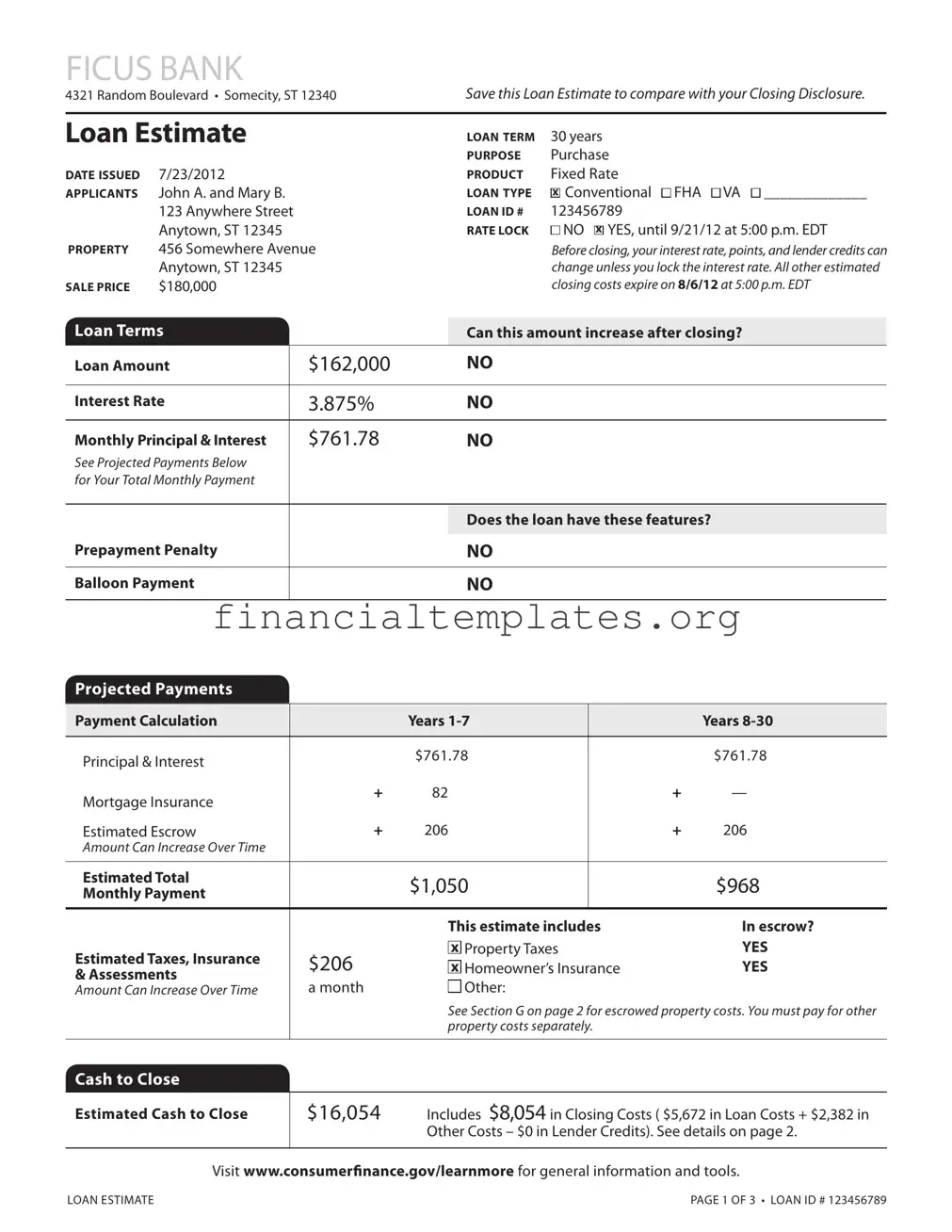The Good Faith Estimate (GFE) is similar to the Loan Estimate in many ways. Both documents outline the costs associated with obtaining a mortgage before the final contract is signed. They provide details on the interest rate, loan terms, and estimated closing costs, allowing borrowers to compare different loan offers. The key purpose of both forms is to give consumers clear, upfront information on what to expect in terms of financing costs.
The Closing Disclosure is another document closely related to the Loan Estimate. While the Loan Estimate provides an initial overview of terms and costs, the Closing Disclosure offers the final terms and costs of the mortgage. It is typically provided to the borrower at least three days before closing, ensuring that they have the opportunity to review the final details. This document confirms or updates the information initially presented on the Loan Estimate.
The Truth in Lending Act (TILA) statement, which was traditionally given to borrowers, shares a common goal with the Loan Estimate. The TILA statement delineates the costs of the loan, the annual percentage rate (APR), and the finance charge. The Loan Estimate consolidates this information by including APR and finance charges upfront to assist borrowers in understanding their loan's costs and terms more comprehensively.
The HUD-1 Settlement Statement, used primarily before the implementation of the TILA-RESPA Integrated Disclosures (TRID), is akin to the Loan Estimate in function. The HUD-1 itemized all costs to the buyer and seller in a real estate transaction. Although the Loan Estimate is provided earlier in the mortgage process, both documents serve to detail the fees and charges associated with taking out a mortgage.
Annual Percentage Rate (APR) disclosures can be seen as a complement to the information found in the Loan Estimate. While the Loan Estimate offers a detailed breakdown of loan costs, including the APR as a means to understand the cost of borrowing over the life of the loan, APR disclosures go further in-depth about how the APR is calculated, providing borrowers with a deeper understanding of how their loan costs are determined.
The Mortgage Servicing Disclosure Statement, while not identical, shares some similarities with the Loan Estimate because it provides important information about the servicing of the mortgage. This statement tells the borrower whether the lender intends to service the loan or transfer it to another company. The Loan Estimate touches on aspects of loan servicing by indicating whether the lender intends to service the loan or transfer servicing.
The Initial Escrow Statement, which outlines the payments that will be put into escrow for items such as property taxes and homeowners insurance, is also related to the Loan Estimate. The Loan Estimate includes an estimated escrow payment as part of the projected monthly payment, helping borrowers understand how much they need to budget for these costs.
The Right to Receive Appraisal Report informs borrowers that they are entitled to receive a copy of any appraisal conducted on the property they are financing. The Loan Estimate mentions the possibility of an appraisal and its associated cost, highlighting the borrower's rights and responsibilities concerning property appraisals.
Finally, the Affiliated Business Arrangement Disclosure is somewhat similar to information provided in the Loan Estimate because it discloses when a lender has an ownership interest in a company providing services required for the loan (e.g., title insurance). The Loan Estimate includes costs for such services, and this disclosure ensures that borrowers are aware of business relationships that might affect their costs.



